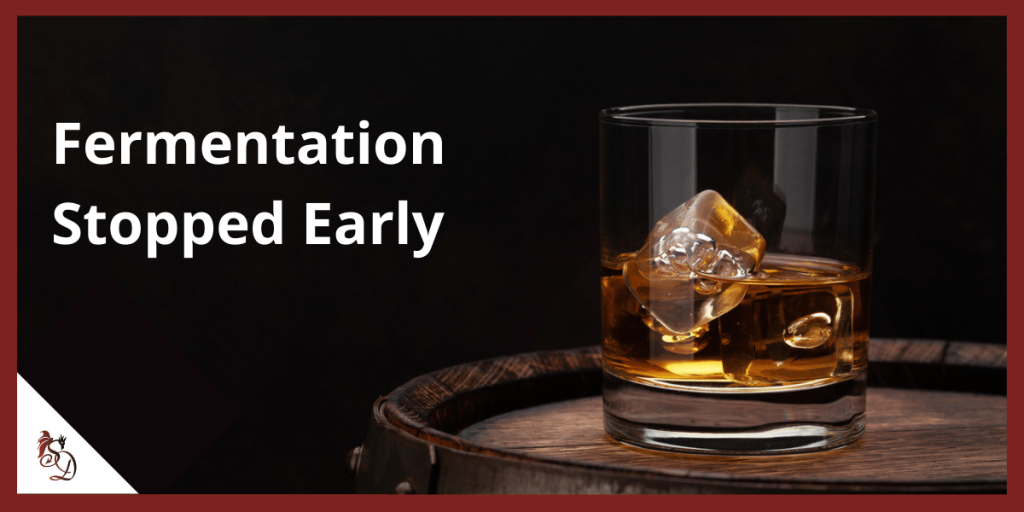Fermentation Stopped Early

There is a lot of minutia and detail that goes into the distilling process and you can make it as complicated as you’d like. No matter how much care you take in distilling itself, if you don’t have a good fermentation practice then you’re not building a good foundation for your final spirit. Stuck fermentation happens from time to time but there are some tricks to troubleshoot what’s going on and hopefully how to get things back on track.
The first thing you want to check is to make sure that your fermentation is actually stuck and not finished. If you took an initial gravity reading you can take another gravity reading to see whether there’s any sugar left for the yeast to digest. If you don’t have a starting measurement then you can do a taste test to see if there’s any detectable sweetness in your beer. If you’re using sugar or molasses as a base then some of those sweet notes will likely be present even after the fermentation has completed.
If your beer still has some usable sugar left you should check the temperature and pH to make sure they’re in range. Yeast is like any other organism and they have a happy place where they’re the most productive and if you’re too far outside of range they may go on a hunger strike. If your temperatures and/or pH were out of range and bringing them back in line doesn’t kick your fermentation back into gear you can try sparging CO2 to bring some yeast back into suspension but be careful, you may be introducing some wild type yeast that can throw off your batch to batch consistency.
If all this fails and there’s still good sugar leftover and your pH and temps all look good then your last-ditch effort is to repitch. Ideally, if you have another batch kicking you can transfer some material over from that to get your ferment rolling again, otherwise, it may be difficult to get things started from scratch when your ferment has already been going.
A very wise man once said that “An ounce of prevention is worth a pound of cure.” It’s much easier to create an environment from the start that keeps the yeast happy than it is to make them happy halfway through. So do yourself a favor and make sure you have good initial readings on gravity and pH and you have a way to maintain the temperature throughout your fermentation. And don’t forget to supplement with yeast nutrients as well, just like we can’t live very well off of sugar alone, yeast needs other nutrients to thrive and be as productive as possible. Please comment and let us know if you have any other tips or tricks for getting stalled fermentation back on track.